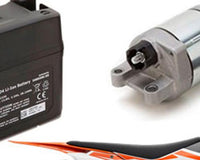Table of Contents
Around the world, electric vehicles are becoming more widely used. That’s because they’re part of the global response to climate change.
Manufacturers like General Motors plan to abandon the combustion engine by 2040.
Already, governments and organisations are laying the necessary infrastructure to abandon the combustion engine.
By 2019, there were 7.3 M charging stations worldwide.
As the global effort against climate change continues, charging stations face a persistent question: they still use fossil-fueled power grids, so are they really sustainable?
Yes, but with cleaner power sources.
Charging stations must draw their power from renewable energy sources to be sustainable.
Let’s delve deeper into why charging stations are sustainable, the factors that influence their sustainability, and the potential solutions to fossil-fueled charging stations.
Why Charging Stations Are Sustainable
Electricity networks—which power vehicle charging stations—involve a mixture of energy sources:
- Fossil fuels (coal, gas, oil)
- Nuclear
- Renewables (wind, solar, hydro)
Fossil fuels still dominate the world’s electricity supply with a 61% share, but more governments are pushing for cleaner power grids.
Renewables emerged as a major electricity source in the last decade, with a 29% share of the global electricity supply by 2020. The following table highlights this growth and compares it to fossil fuels and nuclear electricity.
| Electricity Source | 2010 | 2015 | 2020 |
|
Coal Gas Oil Fossil fuels |
39.65% | 37.77% | 33.79% |
| 22.30% | 22.81% | 22.79% | |
| 5.08% | 5.10% | 4.37% | |
| 67.03% | 65.68% | 60.95% | |
|
Hydropower Wind Solar Other renewables Renewables |
16.29% | 16.58% | 16.85% |
| 1.67% | 3.55% | 6.15% | |
| 0.15% | 1.09% | 3.27% | |
| 1.95% | 2.40% | 2.72% | |
| 20.06% | 23.62% | 28.99% | |
| Nuclear | 12.90% | 10.71% | 10.12% |
Source: Our World in Data
The global push for cleaner power saw fossil fuel usage to decline by 6%, while renewables increased by 9% within the last decade.
This trend, coupled with the growing use of electric vehicles, means that charging stations are an essential part of the global shift towards renewable electricity.
Factors Affecting the Sustainability of Charging Stations
Your Geographical Location
As the world transitions to cleaner electricity sources, some countries are already ahead of the trend.
68% of Sweden’s electricity comes from renewables, while Brazil is even more impressive at 84%.
Both countries are far ahead of the global average of 29% renewables.
As such, your geographical location influences your access to renewable electricity and the sustainability of your charging stations.
The following table highlights the different electricity supplies of various countries compared to the global average.
| Country | Fossil Fuels | Nuclear | Renewables |
| World | 61% | 10% | 29% |
| Brazil | 14% | 2% | 84% |
| Sweden | 2% | 30% | 68% |
| China | 66% | 5% | 29% |
| The United States | 60% | 20% | 20% |
| Australia | 75% | 0% | 25% |
| South Africa | 89% | 5% | 6% |
| Singapore | 97% | 0% | 3% |
Source: Our World in Data
Some countries like South Africa and Singapore have limited renewable electricity and can’t solely depend on it.
Their on-grid charging stations have to rely on non-renewables to function, which makes them unsustainable, not to mention contributing to emissions.
The good news is that more countries are becoming committed to renewable electricity and expanding their reach.
The Emergence of Extreme Fast Charging
One of the barriers to electric vehicle adoption is range anxiety. Prospective buyers worry about how long it takes to charge an electric vehicle and the distance it will cover between charges.
In response, vehicle and charging equipment manufacturers developed extreme fast charging;a charging system capable of refilling your batteries within minutes.
Extreme fast charging can provide up to 13 miles per minute of charge with plans for it to be commercially available by 2025. Already, Tesla’s 140 kW Supercharger is available in all 50 US states, and it’s free.
The following table demonstrates how quick extreme fast chargers are, compared to other types of chargers.
| Type of Charger | Range/Hour of Charge |
| Level 1–110 V (1.4 kW) | 3–5 miles |
| Level 2–220 V (7.2 kW) | 25 miles |
| DC Fast Charger (50 kW) | 100 miles |
| Tesla Supercharger (140 kW) | 330 miles |
| Extreme Fast Charging (350 kW) | 787.5 miles |
Source: Office of Energy Efficiency & Renewable Energy
As extreme fast charging becomes more widespread, it could potentially alleviate range anxiety. Yet, what are the implications for the environment and power grid?
Put simply, it could mean greater electricity demand on the power grid and an increase in carbon emissions.
A single charging station using extreme fast charging will demand 350 kW of power, much more than the current fast-charge stations using 50 kW of power.
As a result, countries with limited renewable energy will be forced to use non-renewable sources.
Making Charging Stations More Sustainable
Off-Grid Solar-Powered Charging Stations

Off-grid solar charging stations draw their power directly from solar panels fitted on rooftops or large steel structures. The electricity generated is directly utilised when charging or stored in a battery bank. As such, solar energy is one of the cleanest sources of electricity available.
A battery bank is necessary to ensure a constant power supply amid variations in solar energy during the day and different weather conditions. The battery bank also supplies power for night charging.

Environmental Benefits of Solar-Powered Charging Stations
- Solar charging stations help improve air quality and reduce noise in urban environments. Their availability encourages the transition from combustion engines to fully-electric vehicles.
- The panels on solar charging stations absorb solar radiation while providing shade, much like plants. They help alleviate the urban heat island effect caused by a lack of vegetation cover.
- Solar charging stations improve access to renewable electricity. They’re portable, don’t need grid access, and can be installed in remote geographical areas.
Flexible Charging Speeds
In the coming years, charging stations will rely more on renewable sources like wind and solar. The challenge, however, is the fluctuating nature of wind and solar power.
There’s plenty of electricity on sunny days with high winds, but much less during unfavourable weather conditions.
To cope with this challenge, charging stations must work smarter by varying their charge speed. During high electricity supply conditions, vehicles charge at maximum speed. If the supply drops due to low winds or solar radiation, cars will charge slower.
This flexibility helps accommodate fluctuations in available electricity supply and lets the grid use more renewable electricity. For electric vehicle owners this means a lower cost of electricity.
Already, Amsterdam is conducting a study on flexible charging speeds for electric cars. The study features multiple charging points in various neighbourhoods and a monitoring system that:
- Tracks electricity demand throughout the charging stations.
- Monitors the available electricity supply.
- Adjusts the charging speed accordingly.
This study is part of Amsterdam’s objective to find ways of relieving pressure from the national grid without relying on fossil fuels.
Go Green With Monocrystalline Solar Panels
Monocrystalline solar panels have the highest efficiency ratings (15–20%) of any solar material.
This efficiency comes down to their composition; they’re made out of pure silicon, the second most abundant material on Earth after oxygen.
They’re also the longest-lasting panels and come with lengthy warranties.

BlueSolar VICTRON 20V 305W Monocrystalline Solar Panel 4A SPM043052000
Victron BlueSolar panels come with a 25-year limited warranty on power output and performance. Here’s where you can get them.
At HBPlus Battery Specialists, we have almost 300 listed Victron Energy products to meet your electrical needs, from smart inverters to battery chargers to solar charge regulators.
Contact us today, and find out how we can help you build a sustainable power network.
“Service is beyond what I expected and I would recommend you give them a try.”
Dave T.
Frequently Asked Questions
Do vehicle charging stations work when it’s raining?
Yes, they do.
The charging plugs and the charging station are well insulated to prevent sparking, current loss, water mixing, or short-circuiting due to rain.
How many solar panels do I need for a level one home charging station?
Level one charging at 110 V requires 1.4 kW. The number of solar panels needed for this type of charging depends on the panel’s rating.
For instance, you would need five panels rated at 300 watts to generate a combined wattage of 1.5 kW—enough for level one charging.
Should I wait for my car battery to be depleted before charging?
Electric vehicles use lithium-ion batteries, which have no memory effect. So, there’s no need to wait until the batteries are depleted. You can charge them as often as you need.









